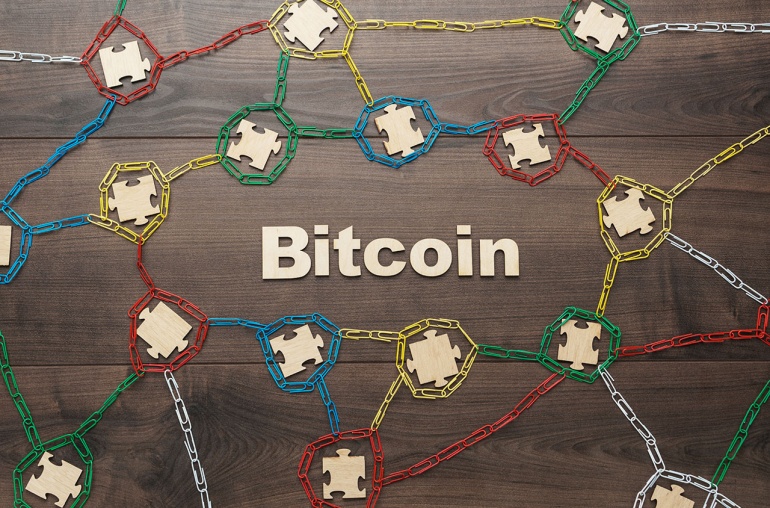During the last few years, Blockchain has gone from being merely an interesting buzzword to a lucrative new avenue for the world’s collective digital infrastructure. Its tremendous potential has the ability to revolutionize everything, from online gaming and stock trading to healthcare provision and manufacturing of consumer goods.
However, if you’re still not sure about the way this technology works, keep reading. This blog will explain everything in detail.
For beginners, a comprehensive Blockchain overview will follow. It will cover the origins and subsequent evolution of the technology along with current utility, potential for the future, and an ever-increasing list of functionalities. So, let’s get straight into it…
What Is Blockchain?
Blockchain is a shared but highly secure chain of data that enables businesses to store information, exchange assets, and record transactions with ease. It is a kind of database or digital ledger that keeps your crucial info safe by storing it in relational and centralized tables over an open and peer-to-peer (P2P) network. This system enables communal functionality instead of one centralized entity maintaining control.
A Blockchain network collects data in the form of groups. They are typically referred to as “blocks.” Every block has a specific storage limit and every newly-filled block is linked to the previous blocks already existing on the network. This forms a chain of data, which is where the name “Blockchain” comes from. For any new bits of information to be added subsequently, a new block must be formed and then connected to existing blocks on the Blockchain.
Moreover, every time a new block of data is formed and added to the network, a time stamp is prepared. As a result, every Blockchain system becomes a “timeline of data.” This is what sets it apart from conventional databases.
Blockchain: How It All Started?
Even though Blockchain has gained significant popularity in recent years, the basic concept has been around for quite a while. In fact, the technology dates as far back as the early 90s, when a bunch of researchers floated the idea of securing data cryptographically in blocks and connecting them together to form a chain. These blocks would be time-stamped so that any sort of data manipulation could be prevented.
For the next decade, the academic world keenly studied and experimented with the concept. In 2008, a web developer and programmer operating under the pseudonym “Satoshi Nakamoto” presented a model that became the world’s inaugural functional Blockchain. Nakamoto, who is also credited with inventing Bitcoin, later used this mechanism as a public ledger for trading the best-known cryptocurrency in the world.
Since then, Blockchain has gone from strength to strength as a technology. Over the years, its usage has expanded way beyond crypto trading and, as far as the future is concerned, there are endless data-oriented possibilities for innumerable industries. In a nutshell, Blockchain signifies a complete paradigm shift today with regard to data storage, sharing, and safekeeping.
3 Key Things to Know About Blockchain
Fundamentally, Blockchain functions as a private network shared between a group of individuals. These people can utilize the system to exchange valuable information in a safe and secure manner without worrying about any kind of data theft or breach. The nature of the data being shared usually depends on the industry a Blockchain is operating in. For instance, a Blockchain within the crypto world will store information about cryptocurrency transactions. This can include buyer and seller identities, the amount of a particular currency being traded, etc.
The following pointers illustrate how a typical Blockchain setup works.
- A user requests a transaction, which is verified by the Blockchain network;
- This transaction is represented by a newly created block;
- The new block is shared with every other node (participant) within that Blockchain system;
- The other participants (nodes) validate the new block and its transaction details.
*In many cases, the nodes tend to get a reward thanks to the “proof-of-work” mechanism;
- After verification by the other nodes, this new block is added to the Blockchain;
- An update about the addition of the new block is shared with the entire Blockchain network. This completes the transaction;
Blockchain Encryption & Smart Contracts
Smart contracts are programs that activate automatically after certain conditions have been satisfied. Many Blockchain networks are streamlined with the help of such smart contracts. Essentially, they’re lines of code that function as an agreement between two entities. Within a Blockchain, smart contracts are used to automatically process and approve transactions between two parties without the need for a third one to supervise the process.
Furthermore, since Blockchain encrypts and crosschecks all data while keeping everything decentralized, stealing any kind of info is an uphill battle. To hack this data, you have to simultaneously penetrate all the blocks within a single Blockchain. This is next to impossible to pull off, even for the most sophisticated hackers in the world!
Components of a Blockchain
Every Blockchain is made up of the following three components.
Nodes
Nodes are devices, usually owned and operated by a human, that can be linked to other devices on a Blockchain system. Whenever a new node becomes part of a Blockchain, it gets a copy of the entire chain. As a result, if that node wants to make any changes or additions to the whole chain, its actions have to be approved algorithmically by the Blockchain network.
For instance, when a node creates a new block, it is shared with everyone in the network. These other nodes then verify that the block hasn’t been manipulated in any way and is viable for addition to the system. This group agreement is called “consensus” and it’s the basis of any Blockchain mechanism’s foolproof data security.
Blocks
As explained earlier, blocks are individual data bundles linked together to form a Blockchain. They include two crucial numbers, “hashes” and “nonces.” Hashes are 256-bit digits used to identify that block’s specific data, while the latter are 32-bit whole numbers that are generated when a new block is formed.
Blocks
As explained earlier, blocks are individual data bundles linked together to form a Blockchain. They include two crucial numbers, “hashes” and “nonces.” Hashes are 256-bit digits used to identify that block’s specific data, while the latter are 32-bit whole numbers that are generated when a new block is formed.
Miners
Miners are Blockchain users who can change (or “mine”) the data within a network or add new blocks to it by consensus. They do this by identifying the right nonce-hash combination (also called “golden nonce”) in a single block.
Parting Thought: Is Blockchain Completely Safe?

As discussed earlier in the piece, Blockchain’s framework is almost non-hackable. It has been designed to make considerations like safety and trust an afterthought within a user’s mind. All in all, Blockchain networks are difficult to hack, modify, or infiltrate in any way. This is why many industries are actively working to implement Blockchain-based systems.
Keep following The Crypto World for more unique stuff from the ever-evolving world of Blockchain.



